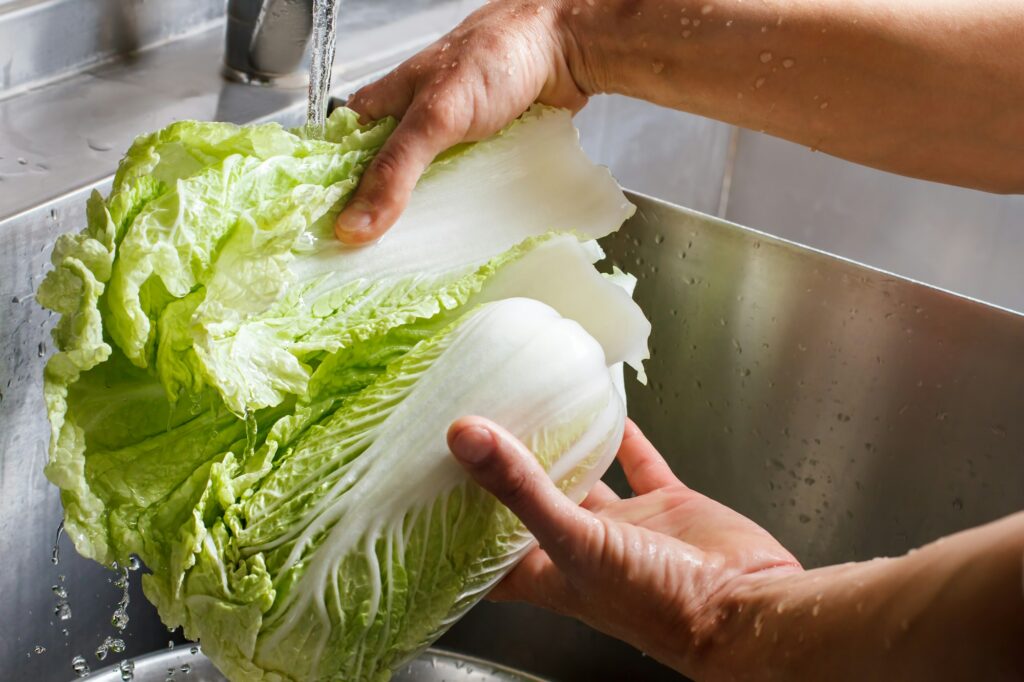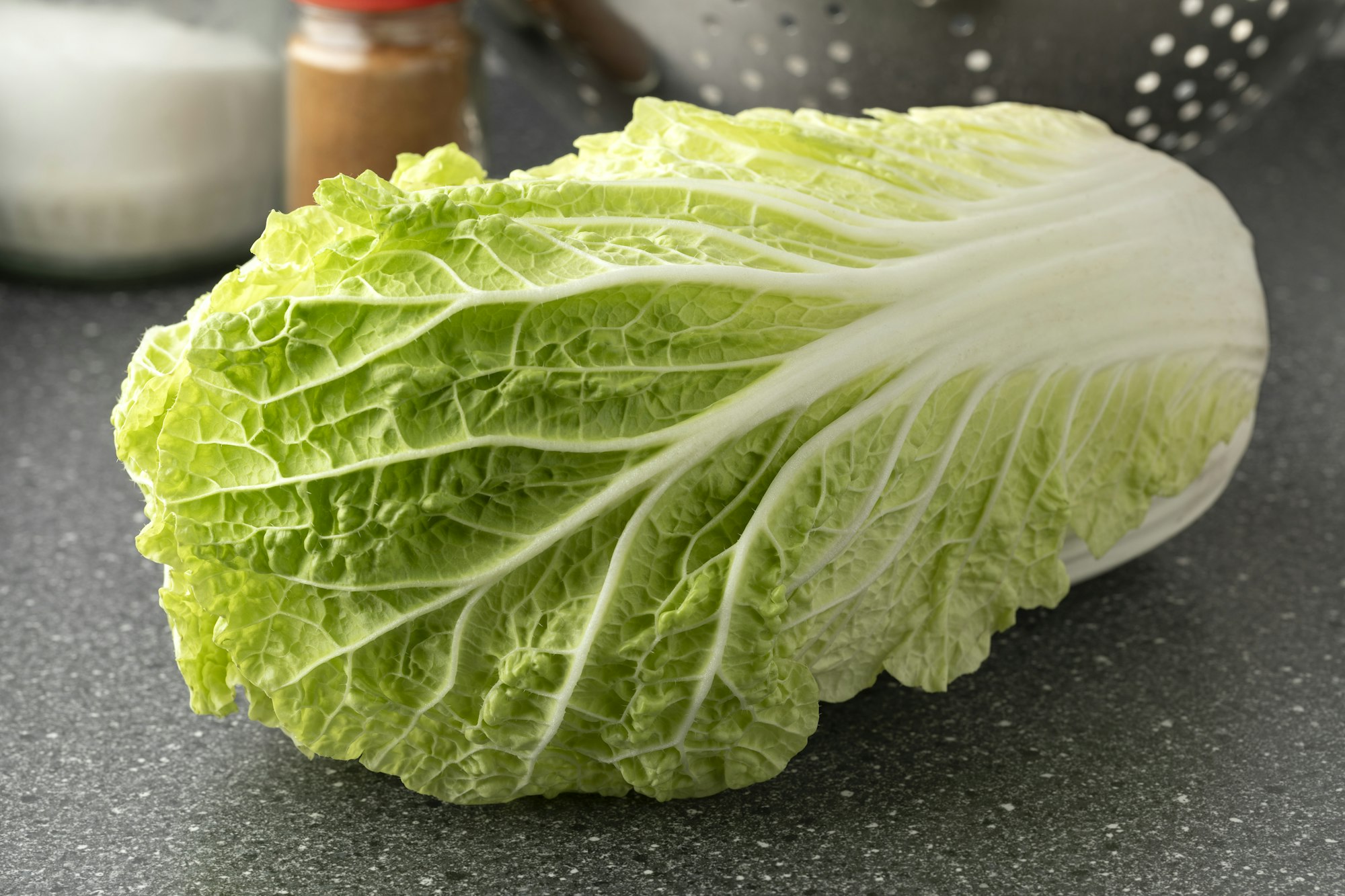The pictures in our articles might not always show exactly what the text is talking about. We use these images to make the article more interesting and eye-catching. They are there to add to the text, but not to replace it or show every detail.
Introduction
Chinese cabbage, also known as Napa cabbage, is a leafy green vegetable that has gained popularity worldwide for its mild flavor and impressive nutritional profile. This versatile vegetable is a staple in many Asian cuisines and has found its way into kitchens across the globe. With its crisp texture and subtle sweetness, Chinese cabbage offers a unique culinary experience while providing numerous health benefits.
In this article, we'll explore fascinating facts about Chinese cabbage, from its nutritional value to its cultural significance. Whether you're a cooking enthusiast or simply looking to incorporate more healthy vegetables into your diet, understanding the many facets of Chinese cabbage will surely pique your interest and inspire you to make the most of this remarkable vegetable.
Key Takeaways
- Chinese cabbage is highly nutritious, packed with vitamins, minerals, and antioxidants
- It has detoxifying properties and is an excellent source of dietary fiber
- Chinese cabbage is easy to grow and has a long shelf life
- The vegetable is versatile in cooking and can be used in various dishes
- It has cultural significance, especially during the Lunar New Year celebrations
Interesting Facts About Chinese Cabbage

1. Nutritional Powerhouse
Chinese cabbage is a nutrient-dense vegetable, offering a wide array of vitamins and minerals. It's particularly rich in vitamin C, vitamin K, and folate. These nutrients contribute to a strong immune system, healthy bones, and proper cell function.
2. Detoxifying Properties
The high water content and fiber in Chinese cabbage make it an excellent food for detoxification. It helps flush out toxins from the body and supports overall digestive health.
3. Dietary Fiber Source
Chinese cabbage is an excellent source of dietary fiber, which aids in digestion, promotes satiety, and helps regulate blood sugar levels. This makes it a great choice for those looking to manage their weight or improve their gut health.
4. Easy to Grow
Whether you have a spacious backyard or a small balcony, growing Chinese cabbage is relatively easy. It can be cultivated in pots or vegetable beds, making it accessible for home gardeners of all experience levels.
5. Long Shelf Life
When stored properly in a cool, dry place, Chinese cabbage can stay fresh for up to a couple of weeks. This long shelf life makes it a convenient vegetable to keep on hand for various recipes.
6. Hydration Helper
With its high water content, Chinese cabbage helps keep the body hydrated and supports overall health. This makes it an excellent choice for those looking to increase their fluid intake through food.
7. Variety of Types
While Napa cabbage is the most common variety, there are other types of Chinese cabbage, such as Michihili and Bok Choy. Each variety offers slightly different flavors and textures, adding diversity to your meals.
8. Cultural Significance
Chinese cabbage holds a special place in many Asian cultures, particularly during the Lunar New Year celebrations. It symbolizes wealth and prosperity, making it a popular ingredient in festive dishes.
9. Culinary Versatility
One of the most appealing facts about Chinese cabbage is its versatility in the kitchen. It can be used in a wide range of dishes, including:
- Stir-fries
- Noodle dishes
- Dumplings
- Spring rolls
- Salads
- Soups
Its mild flavor becomes sweeter when cooked, making it a perfect addition to many recipes.
10. Global Cultivation
While it's the most widely grown vegetable in China, Chinese cabbage is now cultivated worldwide due to its popularity and cold resistance. This global cultivation has made it more accessible to consumers around the world.
11. Scientific Classification
Chinese cabbage belongs to the species Brassica rapa, with Napa cabbage being the subspecies pekinensis. This classification places it in the same family as other popular vegetables like broccoli and cauliflower.
12. Ideal Growing Conditions
Chinese cabbage is a cool-season vegetable that thrives in temperatures between 60 to 65 °F (15 to 18 °C). It can be planted in early spring or fall, making it a versatile crop for different growing seasons.
13. Planting Methods
Gardeners can grow Chinese cabbage from transplants or by directly seeding, especially for fall crops. This flexibility in planting methods makes it accessible to both novice and experienced gardeners.
14. Soil Preferences
For optimal growth, Chinese cabbage prefers well-drained sandy loam with high organic matter content. The ideal soil pH is between 5.8 and 6.5, which provides the best conditions for nutrient absorption.
15. Historical Significance
Chinese cabbage has a rich history, primarily grown in the Yangtze River Delta region. It gained popularity during the Ming dynasty for its medicinal qualities, cementing its place in traditional Chinese medicine and cuisine.
FAQ: Facts About Chinese Cabbage
How do I store Chinese cabbage?
Store Chinese cabbage in a plastic bag in the refrigerator's crisper drawer. It can last up to two weeks when properly stored.
Is Chinese cabbage low in calories?
A: Yes, Chinese cabbage is very low in calories, making it an excellent choice for those watching their calorie intake.
Can I eat Chinese cabbage raw?
A: Absolutely! Chinese cabbage can be enjoyed raw in salads or as a crunchy addition to sandwiches and wraps.
How does Chinese cabbage compare to regular cabbage?
Chinese cabbage is generally milder and sweeter than regular cabbage. It also has a more tender texture.
Are there any potential side effects of eating Chinese cabbage?
While generally safe, some people may experience digestive discomfort due to its high fiber content. As with any food, moderation is key.
Conclusion
Chinese cabbage is truly a remarkable vegetable, offering a wealth of nutritional benefits and culinary possibilities. From its rich vitamin content to its detoxifying properties, the facts about Chinese cabbage reveal why it has become a beloved ingredient in kitchens worldwide. Its versatility in cooking, ease of cultivation, and cultural significance make it a vegetable worth exploring and incorporating into your diet.
Whether you're looking to boost your nutrient intake, experiment with new recipes, or simply add more variety to your meals, Chinese cabbage is an excellent choice. By understanding its characteristics and benefits, you can make the most of this nutritious and delicious vegetable. So why not pick up some Chinese cabbage on your next grocery trip and discover the many ways it can enhance your cooking and your health?






